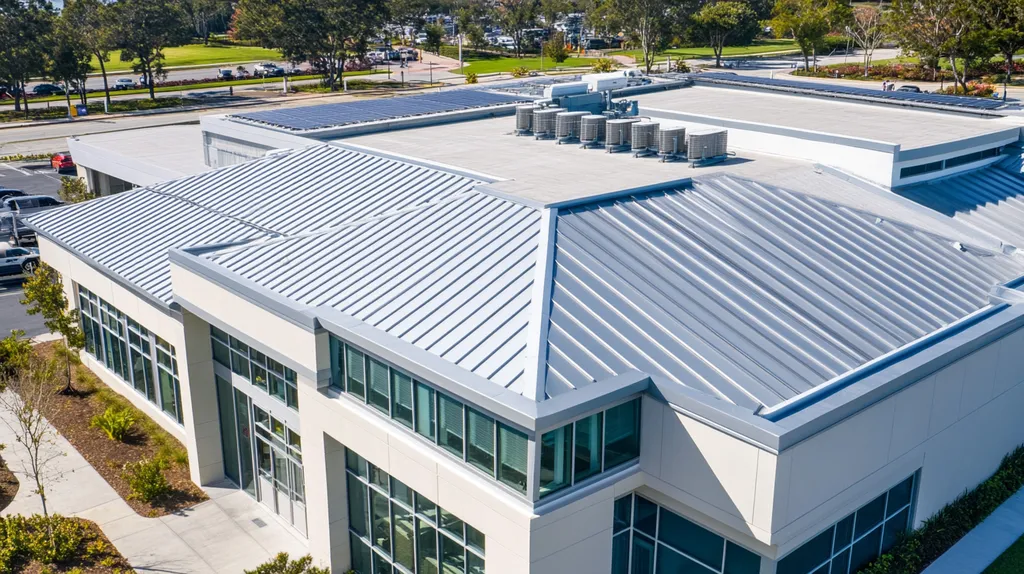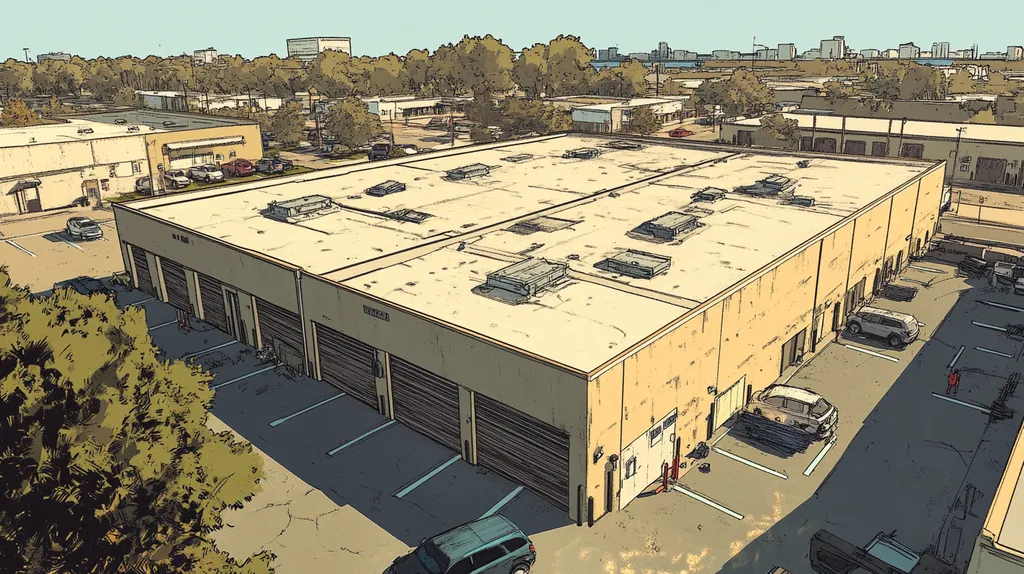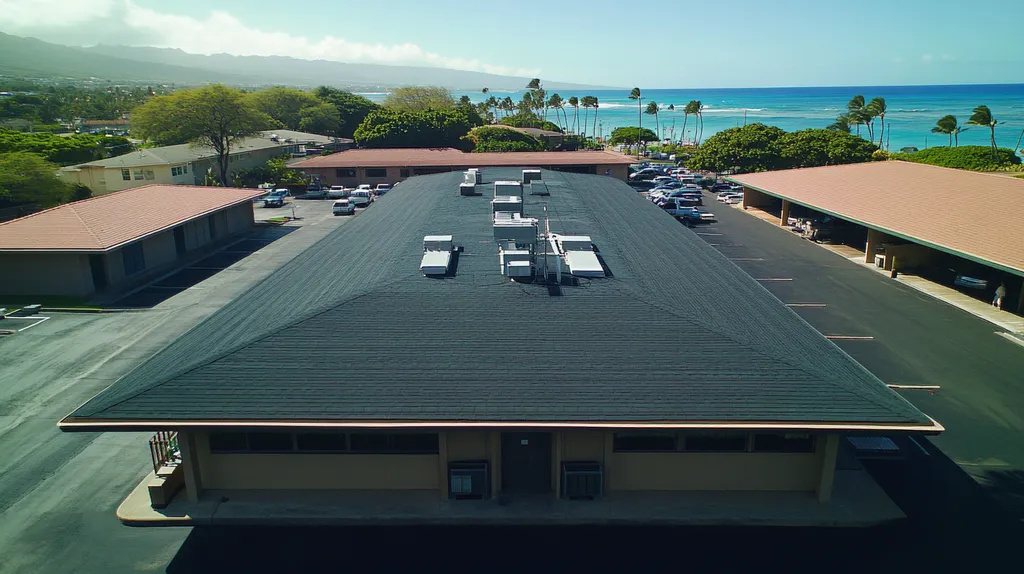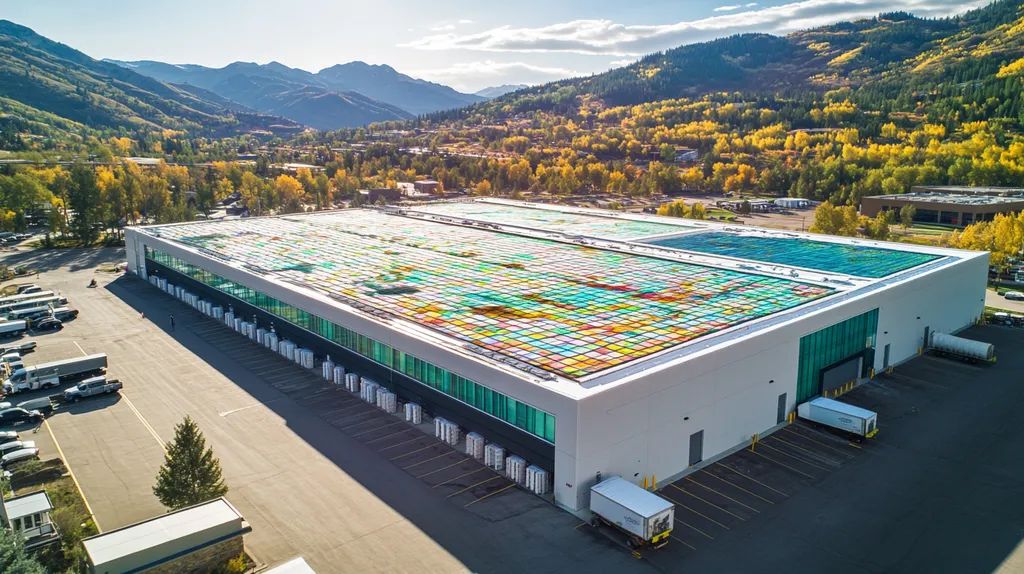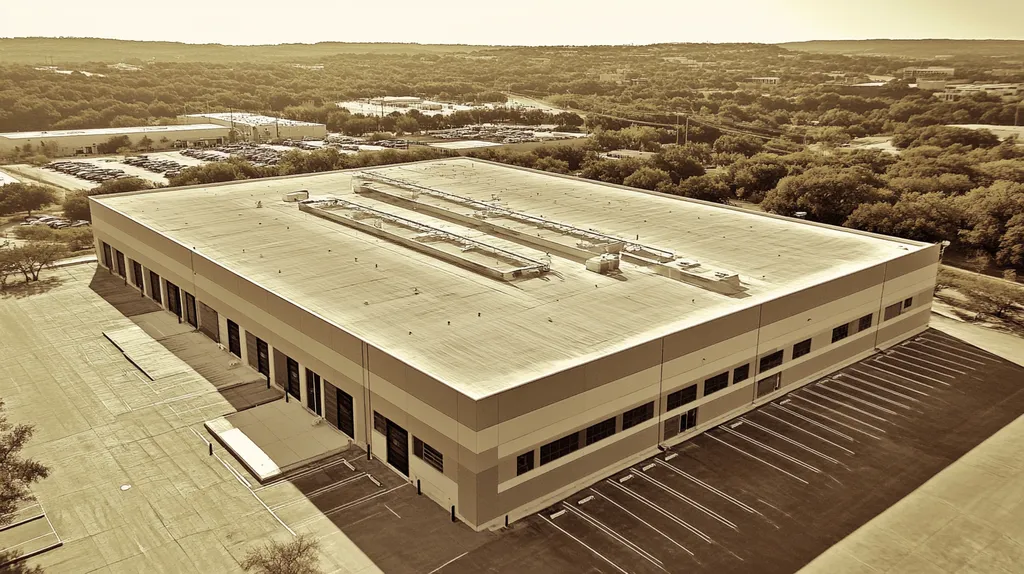Nearly 40% of historical commercial roofs fail prematurely due to inadequate lifespan assessment and maintenance planning, resulting in millions in unexpected repair costs annually.
For property professionals managing historical commercial buildings, understanding roof lifespan expectations has become increasingly critical as these structures age past their intended service life.
From material degradation patterns to compliance requirements, today’s facility managers must navigate complex factors that determine a roof’s longevity while preserving architectural heritage.
This comprehensive guide examines the key components affecting historical commercial roof lifespans and provides actionable solutions for maximizing their service life through informed planning and management.
SECTION 1: PERFORMANCE FACTORS
The lifespan of a historical commercial roof is not just a number; it plays a crucial role in the longevity and value of a property. Many property owners overlook the significant factors influencing a roof’s durability. For instance, a roof designed to last 20 years could fail in just 10 if it isn’t properly maintained. Gaining a solid understanding of these performance factors is essential for making informed decisions that can prevent future setbacks and costly repairs.
Material Durability and Quality
The choice of materials in a roofing system profoundly affects its lifespan. High-quality materials are better equipped to endure environmental stresses and require fewer repairs over time. As an example, a roof made of superior EPDM can outlast one constructed with lower-grade asphalt significantly.
Furthermore, ensuring that materials complement the historical architecture is of utmost importance. Using inappropriate materials can not only shorten lifespans but also threaten the building’s historic value. Property owners must carefully select materials that align with the architectural essence and purpose of their structure.
The reputation of the manufacturer and the accompanying warranty are also critical considerations. A strong warranty is a reliable indicator of material durability, offering peace of mind for property owners. It is wise to favor roofs supported by substantial warranties that reflect long-term material integrity.
Key Action Items
Weather Condition Impact
Weather conditions significantly influence roofing performance and lifespan. Regions with heavy rainfall, hail, or extreme temperature variations impose extra stress on roofing systems. For instance, roofs in hail-prone areas often endure more frequent and severe damage.
The effects of UV exposure deserve significant attention as well. Continuous exposure to ultraviolet rays can break down roofing materials, leading to cracking and leaks. Property owners must carefully assess their local weather patterns and tailor their roofing strategies accordingly.
Effective drainage systems are vital to combating weather-related damage. Properly functioning gutters and downspouts prevent water accumulation, which can lead to leaks and structural challenges. Ensuring optimal drainage is essential for extending a roof’s lifespan.
Key Action Items
Maintenance and Inspection Needs
Regular maintenance and inspections are essential to prolonging a roof’s lifespan. Property owners are encouraged to perform periodic evaluations to identify and address issues before they escalate into costly problems. A neglected roof often results in expensive repairs and premature replacements.
A proactive approach should incorporate both visual assessments and professional inspections. Simple yet effective tasks, like removing debris or checking for signs of wear, can substantially enhance a roof’s performance. By catching small problems early, property owners can prevent major structural damage down the line.
Furthermore, scheduling routine inspections before extreme weather seasons allows for better preparedness. This forward-thinking strategy helps manage vulnerabilities specific to the property and contributes to overall longevity.
Key Action Items
SECTION 2: FINANCIAL CONSIDERATIONS
Understanding the financial aspects of maintaining or replacing a historical commercial roof is paramount. Ignoring budgeting for these essentials can lead to unplanned expenses that disrupt operations and deplete resources. Given that the average lifespan of industrial roofing spans 20 to 50 years, grasping initial installation costs, ongoing maintenance, and future replacement budgets is critical for property professionals.
Initial Installation Costs
Initial installation costs for a historical commercial roof can fluctuate significantly depending on the choice of materials and design. While high-quality materials may require a larger upfront investment, they typically enhance longevity and reduce future maintenance demands. For instance, while metal roofing may be pricier than asphalt, its durability often translates to long-term savings.
Additionally, labor costs and adherence to historical preservation regulations can influence budget considerations. Engaging skilled workers experienced in historical structures may incur higher expenses but ensures the job is done right. Property owners should obtain multiple quotes and evaluate each contractor’s experience with similar projects.
Investing in energy-efficient technologies may raise initial costs, yet they can lead to substantial savings in the long run by lowering energy expenses. Thus, making well-informed decisions during the installation phase is essential for solid financial planning.
Key Action Items
Ongoing Maintenance Expenses
Regular maintenance is essential for maximizing the lifespan of historical roofs and avoiding hefty, unforeseen costs. Property owners should allocate budget for annual inspections to catch minor issues before they escalate into costly repairs. Investing time and resources into routine upkeep not only ensures structural integrity but also enhances longevity.
Ongoing maintenance expenses can encompass a variety of tasks, from routine cleaning to prompt repairs of minor leaks. For instance, addressing a small leak might cost a few hundred dollars, yet ignoring it could balloon into a ten-thousand-dollar expense later on.
Furthermore, property managers must account for the specific needs of historical roofing materials. These unique materials may require maintenance that not all contractors can provide, making it critical to engage skilled professionals who understand their requirements.
Key Action Items
Replacement and Repair Budgeting
Strategic budgeting for potential roof replacement or significant repairs is a critical consideration often overlooked. Historical roofs may have components that will ultimately need replacing, and failing to plan can result in financial distress. Property owners should proactively set aside funds for emergencies to alleviate potential monetary strain.
The costs involved in roof replacement can vary greatly based on factors like material choice and the roof’s size and complexity. A full commercial roof replacement can easily reach hundreds of thousands of dollars, underscoring the necessity of preemptive budgeting to prepare for these eventualities.
Additionally, property managers should investigate potential grants or financial incentives available for historical buildings, which can help reduce replacement costs. Incorporating these opportunities into financial plans allows for greater flexibility in budgeting strategies.
Key Action Items
SECTION 3: COMPLIANCE REQUIREMENTS
Navigating compliance requirements for roofing is paramount. Meeting building codes and regulatory standards protects investments, ensures occupant safety, and avoids costly fines. Non-compliance can lead to unsafe conditions and legal penalties, especially for outdated roofing systems that may not adhere to modern standards. Understanding these requirements is essential for property owners aiming to maintain their commercial roofs effectively.
Building Codes and Regulations
Building codes serve as critical protections designed to ensure roofing structures are safe and long-lasting. Local and state laws dictate everything from material specifications to installation methods, requiring that roofs can withstand specific environmental pressures like high winds or heavy snowfall.
Ignoring these regulations may result in heavy penalties or even mandatory renovations, significantly impacting financial planning. Therefore, commercial property owners should confirm that any renovations or replacements are compliant with current regulations. Engaging licensed professionals to conduct regular audits helps safeguard adherence.
Historical roofs present their own challenges, requiring balance between preservation and compliance. Collaborating with local historical preservation societies can aid owners in maintaining their roofs’ architectural significance while satisfying legal requirements.
Key Action Items
Environmental and Safety Standards
Adhering to environmental and safety standards is essential for creating responsible roofing systems. Guidelines from the EPA and OSHA dictate not only the materials used but also safety protocols during installation and maintenance procedures. Sustainable materials can greatly minimize environmental footprints while satisfying green building standards.
Moreover, safety regulations ensure a secure work environment, protecting both employees and the public. Non-compliance in this area can expose businesses to lawsuits and soaring insurance claims due to workplace accidents.
Awareness of environmental and safety regulations can prevent potential health hazards resulting from neglect. Property owners are encouraged to enlist specialists familiar with these standards to help navigate compliance and mitigate future risks.
Key Action Items
Insurance and Liability Compliance
Complying with insurance requirements is vital to protect investments in commercial roofing. Property owners must ensure their insurance policies sufficiently cover various risks, particularly those associated with aging roofs and their materials. For example, older roofing systems may not qualify for full coverage without meeting modern standards.
Liability coverage is equally important, as it safeguards against potential accidents or damages stemming from roofing projects. Insufficient insurance can lead to overwhelming financial consequences in case of incidents or roofing failures.
To strengthen protection, businesses should routinely review their policies in light of their roofing systems. Many property owners might overlook the need to detail roofing materials and conditions in their coverage, which is crucial for avoiding liability. Regular consultation with insurance agents can ensure that policies align with compliance requirements, reducing risk.
Key Action Items
SECTION 4: RISK MANAGEMENT
The integrity of a historical commercial roof is vital for protecting property value and ensuring tenant safety. Aging roofs can harbor hidden risks that, if neglected, may lead to costly repairs and disruptions in operations. Alarmingly, nearly 30% of commercial roofing failures stem from undetected leaks and structural issues. This section discusses proactive risk management strategies to mitigate these challenges and enhance the lifespan of historical roofs.
Identifying Potential Leaks and Damage
Conducting regular inspections for potential leaks is key to preserving a roof’s lifespan. Many historical roofs contain materials susceptible to deterioration, making frequent evaluations essential. Property owners should aim for thorough inspections at least twice a year and especially following severe weather events.
Signs of damage to watch for include missing shingles, rust patches, and water stains on ceilings. Advanced tools such as infrared technology can detect moisture trapped under roofing layers, enabling early identification of vulnerabilities that could otherwise lead to significant leaks.
Working with experienced roof inspectors knowledgeable about historical structures will enhance the detection of underlying problems. These professionals can evaluate both visible and hidden aspects of the roof, ensuring a comprehensive assessment.
Key Action Items
Assessing Structural Integrity
A comprehensive evaluation of a historical roof’s structural integrity is crucial, especially since older buildings may not meet current standards. A weakened roof structure can lead to dangerous collapses, putting occupants at risk. Regular assessments by structural engineers can uncover weaknesses that may not be apparent through routine inspections.
Property professionals should conduct load-bearing assessments to determine if the existing roofing system can withstand added weight from equipment or accumulated debris. Additionally, a thorough examination of drainage systems is essential to prevent water pooling, which can contribute to structural failure.
Utilizing advanced technologies, such as 3D modeling, can offer detailed insights into a roof’s structural capacity. These tools assist property owners in visualizing potential risks, facilitating informed decision-making.
Key Action Items
Mitigating Weather-Related Risks
Weather-related risks can severely affect historical roofs, making it crucial for property owners to implement effective mitigation strategies. Severe storms, high winds, and heavy snow can weaken roof integrity, resulting in leaks and structural damage. An adaptive maintenance plan tailored to the local climate and historical weather patterns is essential.
Implementing seasonal maintenance protocols, such as clearing gutters and drains to prevent water accumulation, is critical. Additionally, routine checks on seals around penetrations after storms can minimize risks.
Investing in weather-resistant materials during repairs can bolster a roof’s resilience against environmental challenges. For instance, elastomeric coatings can enhance protection against UV rays and moisture penetration.
Key Action Items
SECTION 5: OPERATIONAL PROCEDURES
Implementing effective operational procedures is vital for prolonging the life of historical commercial roofs. Without these strategies, property owners risk incurring hefty repair bills or even needing full roof replacements. By prioritizing scheduled maintenance, establishing clear emergency protocols, and conducting thorough inspections, facility managers can significantly reduce risks and enhance the durability of their roofing systems.
Scheduled Maintenance Schedules
Developing a comprehensive scheduled maintenance plan is essential for historical commercial roofs. Regular upkeep allows for the early detection of minor issues that can escalate into significant problems, ultimately saving time and money. It’s advisable to conduct inspections at least twice a year, ideally during the spring and fall, to account for the effects of seasonal changes.
During each inspection, property managers should look for signs of water damage, missing shingles, or deteriorated flashing. Timely remediation of these issues prevents leaks that could compromise the property’s interior. Routine cleaning of gutters and downspouts is also critical to maintain proper drainage and minimize water pooling.
Documenting all maintenance activities enhances decision-making for future repairs and serves as a useful reference in case disputes arise. This organized approach not only improves roof performance but also extends its lifespan. Technology can further streamline maintenance efforts; using software to track inspections ensures that nothing is overlooked.
Key Action Items
Emergency Repair Protocols
Establishing clear emergency repair protocols is critical for addressing unexpected roofing issues swiftly. Delays in responding to emergencies can exacerbate damage and escalate repair costs. A well-defined action plan ensures facility managers can react effectively to any roofing emergencies.
This protocol should identify a qualified emergency roofing contractor for immediate repairs. Property managers must keep contact information readily accessible, along with guidelines for an initial assessment of the damage. Rapid evaluation helps prioritize the most urgent repairs.
Forming an internal team dedicated to emergency response can enhance operational efficiency. This team should be trained to identify potential issues, such as leaks or structural damage, and empowered to take immediate action by contacting contractors. Clear communication within this team is vital for prompt responses.
Key Action Items
Roof Inspection and Assessment Techniques
Thorough inspections and effective assessment techniques are pivotal to maintaining historical roofs. A structured approach to inspections enables property managers to discover vulnerabilities early. Standard practices include both visual inspections and advanced imaging technologies.
Visual inspections entail walking the roof to assess its condition, focusing on seams, flashing, and debris accumulation. Early identification of problem areas can prompt quick interventions and prevent severe damage. Complementing these inspections with thermal imaging can also uncover hidden moisture issues that might not be visible.
After each inspection, creating a detailed report of issues and recommended actions is essential for tracking progress and justifying future budgets. Engaging roofing professionals for in-depth assessments ensures insights into material integrity and structural considerations, helping to maintain the historic character of the roof while addressing modern standards.
Key Action Items
SECTION 5: OPERATIONAL PROCEDURES
Implementing effective operational procedures is critical for prolonging the life of historical commercial roofs. Failure to adopt these strategies can lead to costly repairs and the daunting possibility of full roof replacements. Property owners and facility managers need to prioritize scheduled maintenance, establish clear emergency protocols, and conduct thorough inspections. These proactive measures can significantly mitigate risks and enhance the durability of historical roofing systems.
Scheduled Maintenance Schedules
Creating a detailed maintenance schedule is essential for ensuring the longevity of historical commercial roofs. Regular maintenance allows for the early detection of minor issues before they escalate into significant problems, ultimately saving both time and money. It’s recommended to conduct inspections at least twice a year, ideally during spring and fall, to account for seasonal wear and tear.
During these inspections, property managers should look for signs of water damage, missing shingles, or deteriorated flashing. Timely remediation of these issues can prevent leaks that could compromise the building’s interior. Regular cleaning of gutters and downspouts is equally important to ensure proper drainage, minimizing the risk of water pooling on the roof.
Documenting maintenance activities enhances decision-making for future repairs and serves as a valuable reference in case disputes arise. By adopting an organized approach, facility managers not only improve roof performance but also extend its lifespan. Utilizing technology, such as software for tracking inspections, can further streamline maintenance efforts.
Key Action Items
Emergency Repair Protocols
Establishing clear emergency repair protocols is vital for responding swiftly to unexpected roofing issues. Delays in addressing emergencies can lead to more significant damage and rising repair costs. A well-defined action plan ensures that facility managers can react effectively and efficiently to any roofing emergencies.
This protocol should identify a qualified emergency roofing contractor for immediate repairs. Property managers should keep this contact information accessible, along with guidelines for conducting an initial damage assessment. Rapid evaluations help prioritize urgent repairs.
Designating an internal team responsible for emergency response can significantly enhance operational efficiency. This team should be trained to recognize potential roofing issues, such as leaks or structural damage, and empowered to contact contractors without delay. Regular drills can further assess the effectiveness of the emergency protocol and ensure all team members are familiar with their roles.
Key Action Items
Roof Inspection and Assessment Techniques
Comprehensive roof inspections and effective assessment techniques are essential for maintaining historical roofs. A structured approach can help property managers identify vulnerabilities early. Standard practices include visual inspections and advanced imaging technologies.
Visual inspections involve walking the roof to evaluate its overall condition, specifically examining seams, flashing, and any debris accumulation. Identifying weaknesses early can prompt quick interventions and reduce the likelihood of severe damage. Incorporating thermal imaging during inspections can help detect hidden moisture problems that may not be apparent.
Post-inspection documentation is vital. Generating a report that details observed issues and recommended actions is invaluable for tracking progress and justifying future budgets. Engaging roofing professionals for comprehensive assessments can yield insights into material integrity and structural concerns, ensuring the roof’s historical character is preserved while meeting modern standards.
Key Action Items
Moving Forward
With nearly 40% of historical commercial roofs failing before their expected lifespan, property professionals must adopt a comprehensive approach to roof management.
The confluence of aging materials, changing weather patterns, and evolving building codes presents unprecedented challenges for historical structures.
Success hinges on three critical factors: implementing rigorous maintenance schedules, ensuring regulatory compliance, and maintaining adequate financial reserves for inevitable repairs.
By following established inspection protocols, documenting all maintenance activities, and planning for both routine upkeep and emergency repairs, property managers can effectively extend their roofs’ lifespans by 15-20 years.
The future of historical commercial roofing lies in balancing preservation with modern performance standards, ensuring these architectural treasures continue serving their communities for generations to come.
FREQUENTLY ASKED QUESTIONS
Q. What performance factors affect the lifespan of a commercial roof?
A. The performance factors affecting lifespan include material quality, weather conditions, and maintenance practices. Regular evaluations and maintenance can dramatically enhance longevity, ensuring the roof withstands environmental stresses effectively.
Q. How should I budget for ongoing maintenance of an industrial roof?
A. Allocate a yearly budget for routine inspections, repairs, and maintenance tasks. Regular upkeep minimizes future repair costs, ensuring the roof remains in sound condition and can extend its lifespan.
Q. What are the compliance requirements for a historic commercial roof?
A. Compliance requirements include adhering to local building codes, ensuring safety standards, and engaging with historical societies. Meeting these regulations is essential to avoid penalties and protect the integrity of the property.
Q. How can I identify leaks on a historical commercial roof?
A. Regular inspections are crucial for identifying leaks. Look for water stains, missing shingles, and utilize advanced tools like infrared technology to detect hidden moisture before it escalates into significant damage.
Q. What operational procedures should I follow for a historical roof?
A. Establish a scheduled maintenance plan, emergency response protocols, and thorough inspection practices. These proactive measures are essential to address issues promptly and increase the durability of a historical roofing system.
Q. Why is the choice of roofing materials crucial for commercial roofs?
A. The choice of materials directly impacts the roof’s longevity, durability, and maintenance needs. High-quality materials, though potentially more expensive, often offer more extended performance and reduced long-term costs, safeguarding investments.
Q. What long-term strategies can I implement for roof longevity?
A. Long-term strategies include regular maintenance, utilizing durable materials, and adjusting maintenance plans according to seasonal weather patterns. Assessments by professionals also ensure the roof remains compliant and retains its structural integrity over time.


